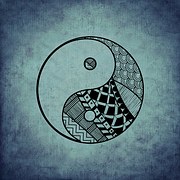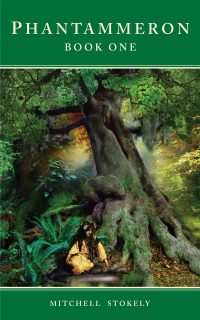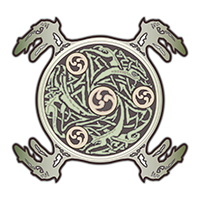I’ve lectured online about the idea that people in Western Cultures have a very conflicted, dualistic, fatal sense of life. Time for us is not steady, flowing like a river. Those of us descended from Ireland, England, and Europe have come from ancestors that are deeply connected to the Northern Hemisphere with its radical changes in the seasons and the shifting of shadows from an oscillating sun.

The year punctuated with Christmas right on the Winter Solstice, Halloween between equinoxes and May day with our female fertility High School prom queen, shows we are still locked into the sun’s ancient pagan myths. We cannot escape our pagan past. Modern religions have all embraced them!
This has all formed (over thousands of years) in the Modern Western story teller a sense of perpetual change; of good and evil, light and dark, this and not this; a global conflict but also two that conflict which yet live as one in many aspects of our cultural belief systems. These antipodes live in our souls. And Western people still know very little of themselves such that we still repeat in millions of books and films the same primitive conflicts without knowing why or what those stories or patterns mean.
In my novel Phantammeron Book One I had set to portray the Celtic duality in story in a new way that embraced the ancient fairy tales and their native duality. So often in my stories I have tried to achieve things that have conflict in them….not in the shallow sense of a protagonist that’s evil that does good, but in the symbolic meaning that’s contained in everything throughout the books; the view that two opposing values can live as one whole without destroying themselves.
One example of this internal conflict is the idea of there being a opposite to every piece of my books. In the first chapter we learn that the Emptiness and Nothingness hid from the Sacred Light cast from silver wings of the Essence Eternal. Yet I tell the reader the pit they hid in was a prison of their own making. This implies something deeper, more metaphysical than simply evil fleeing good. It implies another conflict that’s a part of Evil’s nature….that though ruled by chaos often evil is imprisoned by its own narrow nature.
Another example of duality is the Shade and Shadow as brother and sister. They are both twins in a sense, born of the Night yet we learn the Shade has forgiven her father while her brother the Shadow desires his father’s death. The main protagonist Ana is born into the world innocent and loving yet she is the one that destroys the pool by drinking from it, depleting its waters such that the One Tree perishes. This isn’t story irony but truth in that often the most innocent and youthful in fairy tale instigate trouble and change.
We learn in my novel that Agapor wants to find his father and slay him yet he is the one in the end that sacrifices himself for his child, becoming the hero that saves the forest and thus the world. We know that Phantaia the forest has two parts….Abrea the peaceful paradise at its center and the dark, storm-ravaged outer lands that are filled with dread. The inner lands have the good and noble 12 Chieftain Trees but their 12 evil brethren the witch-hazels live to harass all travelers in the outer lands of Avaras. More duality in the landscape itself!
Ana meets the beautiful and kind golden-haired Secret Spring who forgives her for taking away the waters of her spring. But later her twin the witch Anissa leads Ana to the pit that holds the Black Pool, its twin to the silver pool in Abrea.
Interesting note…..much of this I never plotted but it came to me as I constructed missing pieces to this strange story. It wasn’t till much later after publishing and checking errors I saw some of these dual patterns and pondered them. One that came to mind was the fact that the ghost of the Secret Spring gives Ana the grace she needs and understanding to accept the fact the well was meant to be depleted by her. But when Ana later falls in the pit and visits the dark woman of the Black Pool, she cannot drink from it, Ana refusing to enter it until the Nothingness rises up to confront her.
This implies more layers to the book than first perceived in that we see a good character drink from a good well, destroying it. But she cannot drink from the evil well, thereby perpetuating it. Odd but clearly part of the proof to me that the Celtic mind carries some inner dual mythology in our DNA that fills the holes in our minds with conflicting yet necessary missing ideas.
It’s fascinating to me to see this in my own art. Lastly, the idea that everything is This but Not This is shown in the Essence Eternal and the cursed waters Ana releases into the world in book one. This is the central conflicting theme you will see in later books…..what blessing and yet curses do the Sacred Waters in Phantaia hold and why? That is the fun in writing my novels….showing that fate and life and war all are filled with double-meaning.
No, we are not shades-of-gray criminals. There is goodness and evil in society. We draw that line in our laws. But there is a strange dual force at work in the world and in our hearts just like in story that our mind both perceives and yet perpetuates. And it’s up to the creative elite…the artists and writers in our world….to paint a picture of this duality in our culture and in us, thereby showing us who we are and what that duality means.
This duality in western thought and myth again is not about good vs evil, beauty vs ugliness, winner versus loser, this or not this, but about the strange dual nature we perceive in the fundamental construction of the world and in life. It is like the old Taliesin 7th century Welsh poem describing a tree in a forest, whose other half is set aflame. What does it mean?
I’m hoping you will read my novels and both question that mystery yet find a few answers.
– the Author



